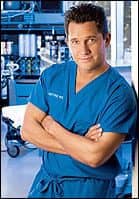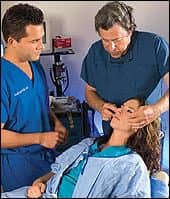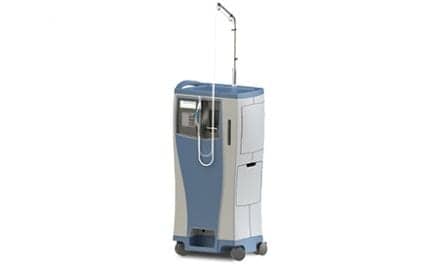 |
Taking a conservative approach to aesthetic plastic surgery can help better ensure patient satisfaction. Gary Motykie, MD, credits that as a big part of the reason his practice has risen to remarkable heights.
“When it comes to plastic surgery, as long as you do no harm, you can always do more,” says Motykie, whose Los Angeles office straddles the border of Beverly Hills. “Patients need to know that we are surgeons, not magicians. They must fully understand that limitations come along with the incredible potential of surgery.”
Patients typically don’t think in terms of surgical conservatism; rather, they think in terms of dramatic change. Consequently, Motykie believes that patients ought to be educated at the earliest possible juncture about setting realistic expectations.
“The way I approach this with patients is to tell them during our initial consultation that I will do everything in my power to deliver a great result,” he says. “I also at the same time let them know that I want to do what’s best for them and what’s going to be safest.
“Patients are usually understanding when it’s put to them this way because they see you have their interests at heart. Really, it all comes down to a solid patient–physician relationship and good communication.”
The majority of the patients Motykie sees at Beverly Hills Body—the name of the practice started some 30 years ago by his associate, Richard Ellenbogen, MD, FACS, FICS—are there for corrections of less-than-satisfactory surgery obtained elsewhere.
“I have a reputation as being a ‘go-to guy’ for revision work,” he says. But that wasn’t by design.
“It just happened that shortly after I joined with Dr Ellenbogen in 2004 we had a large rise in the number of patients coming in for breast-revision surgery,” he explains. “I performed the revisional surgery, and the patients went home happy. Word spread. Before I knew it, most of my cases involved revisional surgery.”
The most common revision requests Motykie receives involve breasts and noses, in that order. “Among the breast patients, it’s about evenly divided between those who think their previous surgery resulted in breasts that are too small or too large. The rest are typically unhappy about the shape, symmetry, or hardening of their breasts,” he says.
“Patients often seek what I call ‘Goldilocks breasts,’ which are breasts that are not too large, not too small, not too soft, and not too hard, but just right. With the rhinoplasty patients, it’s pretty much the same thing—half feel the original surgeon took off too little, and half feel he or she took off too much.”
Compliance and Recovery
 |
| Motykie discusses breast implants during a patient consultation. |
Beverly Hills Body is located in a medical plaza that serves as home to an array of health care specialists and subspecialists, many of them catering to the celebrity and megabuck crowds who populate the area. Consumers turn to Motykie because he’s a gifted surgeon, but also because they know that his patients tend to bounce back quickly from surgery.
Motykie sets the stage for speedy recoveries by performing all his surgeries with maximum possible precision. “It’s when you try to push the envelope that you have problems—and problems mean longer, slower recovery,” he says.
However, surgical precision is not the entire equation. Accelerated recovery hinges as well on patient compliance with postoperative orders.
“I make sure my patients understand the importance of not exerting themselves for that first week after surgery and the importance of keeping the incision site properly maintained, plus all the other little things they need to do in order to prevent complications,” he says.
“It’s possible to attain a high level of patient compliance, but it requires giving the patients clear, concise verbal and written instructions and then providing consistent follow-up.”
Surgeries performed by Motykie are conducted in-office. “We have a fully accredited 1,600-square-foot operating room with an adjacent recovery room,” he says. “Right now, we’re in the process of expanding our facility. When it’s completed, we’ll have a second operating room and additional offices—a grand total of 4,500 square feet of space.”
The extra OR capacity will be welcomed by Motykie, who is in surgery Monday through Friday and occasionally on Saturday. “I try to schedule surgeries to fill one half of each day, leaving the other half for seeing patients,” he says. “That works out to giving me time for two to three surgeries and four to six consultations per day.”
The reason he arranges his week in this manner is for the sake of customer convenience. “It’s more flexible for patients who are trying to see me, but have only one specific day that they can get away from work or other obligations.” he explains.
“Yes, it would be better for me to have an entire day devoted to surgery and another entire day devoted to consultations. But if my days for seeing patients were confined to Tuesdays and Fridays and the patient only had Mondays free, that could be an obstacle big enough to cause the patient to miss his or her consultation.”
The OR and offices are closed on weekends and holidays. That gives Motykie time to enjoy his favorite recreational pursuits, which, in the realm of sports, include surfing, hiking, snowboarding, and weight lifting.
However, in the realm of the mind and senses, it’s the fine arts—stage plays, concerts, and gallery exhibitions—that captivate him. Says Motykie, “This city affords an amazing number of opportunities for cultural enrichment, and I truly believe in having a balanced lifestyle.”
Threw Hat in the Ring
Motykie hails from Chicago; he finished high school there with top honors. This was also the case at University of Illinois at Chicago, where he received an undergraduate degree in 1993. He went to medical school at Chicago’s Northwestern University and had the title of MD conferred upon him in 1999.
He was then accepted at the University of Texas, Galveston, for that school’s integrated plastic surgery training program. The program included two 2003 externships: one involving microsurgical procedures and cancer reconstructions at MD Anderson Cancer Center in Houston, the other with a prestigious aesthetic plastic surgery practice in Miami.
Just before completing his residency, he received word that Ellenbogen was interviewing candidates for fellowship training in aesthetic plastic surgery. Motykie then contacted Ellenbogen to throw his hat in the ring. “The rest, as they say, is history,” Motykie muses.
One of the reasons Motykie wanted to join Ellenbogen was for the opportunity to engage in research, an aspect of medicine Motykie was especially passionate about. Ellenbogen’s science emphasis at the time was the rejuvenatory properties of harvested adipose tissue.
“Dr Ellenbogen has had a long history of using fat grafting, particularly in facial rejuvenation,” Motykie says. “But until fairly recently, nobody really understood the scientific basis underlying fat’s ability to rejuvenate the skin—not just with regard to volume replacement, but in respect to appearance.
 |
| Motykie and Ellenbogen discuss the facial aesthetics of a future rhinoplasty patient. |
“The answer, we now believe, is stem cells,” he explains. “We still don’t fully understand the mechanics of how stem cells trigger rejuvenation, but hopefully we soon will. Once the process is completely understood, hopefully we’ll be able to achieve even more dramatic results utilizing grafted fat containing higher concentrations of healthy stem cells.
“What’s particularly exciting is the pace at which the insights into the secrets of adipose stem cells are being uncovered,” he continues. “Three years ago, for instance, we had no real inkling of just how powerful they are—it was not known back then that an injected fat cell had the potential to turn into bone or muscle or some other completely different tissue.”
Research is, of course, but a small aspect of the work that goes on at Beverly Hills Body. Mainly, there is clinical care of patients. In that regard, Motykie has developed a philosophy that calls for treating every patient supremely well and that insists on achievement of excellent results every time. He has embraced this ethos for the reason that one can never predict “which patients will love what you did so much that they become your biggest boosters,” he offers.
“There is always a handful of patients who end up being the ones to launch your practice into the stratosphere. They rave about the great experience they had with you. They tell all their friends and family that you’re the plastic surgeon they must see. The next thing you know, your phones are ringing off the hook.”
Refined to a simple calculus, Motykie suggests that a plastic surgeon can expect 20% of his or her patients to be the source of 80% of the practice’s business. The old 80–20 rule, in other words.
Smile! You’re on Candid Camera!
 |
| Motykie and office secretary Veronica Lomeli review a patient’s chart. |
However, the 80–20 rule flies out the window for plastic surgeons fortunate enough to appear on a reality television show, as Motykie is. He is one of the featured practitioners on E! Entertainment Television’s Dr. 90210 program and is also on the Discovery Channel’s entry in that genre, Plastic Surgery: Before & After. The face time he receives from the shows translates into a practice-builder’s delight, a marketeer’s dream come true.
“The TV shows give me incredible exposure to the public, and thanks to that, I’m right now booked solid months in advance,” Motykie reveals. “Currently, about half of my new patients are a result of these shows. And these patients are coming from all over the world—everywhere the shows are seen.”
Motykie landed his spot on Dr. 90210 by being in the right place at the right time. “The show’s producers had previously filmed in Dr Ellenbogen’s office and were at the time actively searching for a deeper cast of surgeons to appear in future episodes,” Motykie says.
“It helped that I had what the show considered the right patient mix. What they want to present on the show are patients who have compelling stories to tell and whose cases make for gripping television.”
Yet, clearly, it’s the surgeons with whom viewers develop intimacy. “There’s a bond there, no question about that,” Motykie says. “Because of it, people in the audience identify with you, giving them a certain level of comfort in calling you when they want to have a plastic surgery procedure performed.”
More than the television show, Motykie believes his practice has benefited from an insistence on simplicity and a reliance on what he calls “smart surgery.” Motykie emphasizes, “I like to keep things on as simple and consistent a level as possible.
 |
| See also “Adipose Stem Cells” by Richard Ellenbogen, MD, FACS, FICS, and Gary Motykie, MD, in the December 2006 issue of PSP. |
“In surgery, simplicity and routine allow me to achieve quickest recoveries and the lowest possible complication rates. The way I keep my surgeries ‘smart’ is by sticking with proven procedures that have a record of success.”
But sticking with the tried and true is no way to be a community standout, some might argue. Not so, Motykie counters.
“Never allow marketing concerns to be the driving force of your practice,” he advocates. “The driving force of your practice should be the quality of the results you deliver in the operating room. If you do good work, the patients will come. If you’re an excellent surgeon, the word will get around and people will seek you out.”
Rich Smith is a contributing writer for Plastic Surgery Products. For additional information, please contact [email protected].




